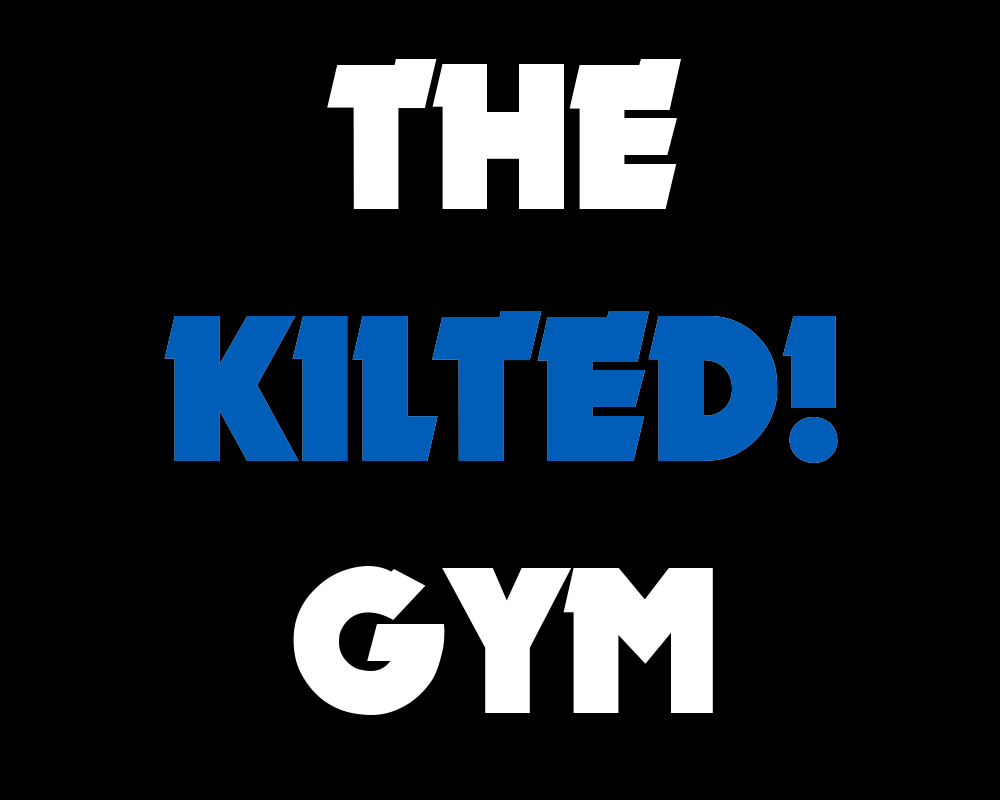In previous posts, I have discussed how we decluttered and organized our garage to make room for a dedicated fitness space. Unfortunately, after more than a month of weekends, the process is still far from complete. However, we do now have a functional fitness space, even if it isn’t yet everything we had hoped for.
If you look for advice online for how to set up a home gym, you will discover the full gamut of possibilities. Sources like Shape magazine focus more on Feng Shui and the include lines like, “you can never have enough foam rollers.” Personally, I need exactly zero foam rollers, but my wife does have one of her own. On the other hand, bodybuilding.com takes their opportunity to diss “sissy” commercial gyms that don’t allow chalk and include descriptions like “my sick training sphere.” Frankly, I’m too old to use “sick” to mean cool and I don’t think those people who are in the proper age range to use the term even use it anymore.
Chances are, like me, neither of these extremes will fit your needs or lead you to the proper home gym, and you’re looking for something in between.
Make Your Home Gym Your Gym
Ask yourself, what do I need in my gym? What kind of fitness do I want to do? What will be the purpose of my gym? If you want to focus on general fitness or start small to see what you like, you’ll be building a bodyweight gym which needs more open floor space than anything else. Or maybe you want a boxer’s gym which will need to have a heavy bag, speed bag, or a BOB (Body Opponent Bag) and space for jump roping and bodyweight exercises. Maybe you want a lot of cardio equipment which will require a lot of floor space (). Or maybe you’re thinking of weightlifting which will require space weight storage and some form of bench, rack, or lifting platforms. Better yet, maybe you’re looking for some combination of the above to fit your specific needs. Remember, this will be your gym, and can be anything you want!
 Once you know what you want to do in it, ask how you want your gym to look. In the corporate world, it’s called branding. Making your own home gym is your chance to work out in a space that meets your design criteria and your color scheme. Many commercial gyms have a set corporate color and design scheme, and in my experience, no one has mastered this (to a fault) better than Planet Fitness. But if purple is not your thing, Planet Fitness can be pretty off-putting to someone who just wants a place to get a good workout.
Once you know what you want to do in it, ask how you want your gym to look. In the corporate world, it’s called branding. Making your own home gym is your chance to work out in a space that meets your design criteria and your color scheme. Many commercial gyms have a set corporate color and design scheme, and in my experience, no one has mastered this (to a fault) better than Planet Fitness. But if purple is not your thing, Planet Fitness can be pretty off-putting to someone who just wants a place to get a good workout.
Before getting started, consider this: what do you envision in your head? Don’t think about equipment yet, just the environment where the equipment will be. Do you want a clean minimalist space? The Feng Shui article in Shape may be just what you need. Do you have certain colors you want to incorporate like Planet Fitness does (maybe your favorite team’s colors, such as PMS Black C and PMS 1235 C Yellow for the Pittsburgh Penguins)? Are there certain things you want on the walls? Posters, flags, motivational sayings, a stand up of Arnold Schwarzenegger for inspiration, mirrors are all things you may want to consider. Or do you want to focus purely on function and ignore painting and decorating?
The gym environment doesn’t end with decorating. Maybe it will be to get your morning news while you work out or just to have some tunes playing to get you into the right mood. You will also need to consider if you want to have televisions, radios, or speakers in your gym and where they will go.
Once you know what you want, make a plan. Because without a plan there can be no attack, and without an attack there can be no victory.
Customize Your Environment
Once you know what you want, it’s time to make it happen, and this step can be straightforward. Obviously, if it’s part of the plan, you’ll start by painting the walls in the base color. Then you’ll move on to the decorating – take care of any special designing like murals, slogans, or anything else that involves detailed painting on the walls. My caution on painting is this – that if you are not artistically inclined, don’t expect your personal murals to turn out anything like murals found on Pinterest, especially where paint is involved. I can paint a wall just fine, but regardless of how good or how expensive the painters tape is, I have never managed to get it to give me a clean line when used for masking, especially if you have any kind of texture on your walls.
Once the paint has dried (or if you didn’t paint), mount any extra equipment like a wall-mounted television or speakers. Hang up any accessories like posters, clocks, whiteboards or corkboards, or anything else that your plans call for.
If your gym is in a room inside your house, this probably won’t be an issue, but if you’re setting up in a garage or an unfinished basement, you will need to consider lighting and temperature control. Is the space well-lit enough not to feel dingy or depressing? If you’re working with a garage, opening the door may be enough to solve that problem (as long as you don’t mind being on display to the neighborhood when you work out). Depending on the season and the region where you live, temperature control can be the greatest challenge for your home gym, especially if it is in your garage.
For most of the year, garages feel more like being outside than inside, so start thinking about accommodating times when it may be too hot or too cold in the garage. Consider insulating the garage door which can help regulate temperatures. You may also want to invest in a space heater, or fans to help regulate the environment. It all depends on your specific situation, and may not even be something you can figure out until you hit those seasons where it gets too hot or too cold.
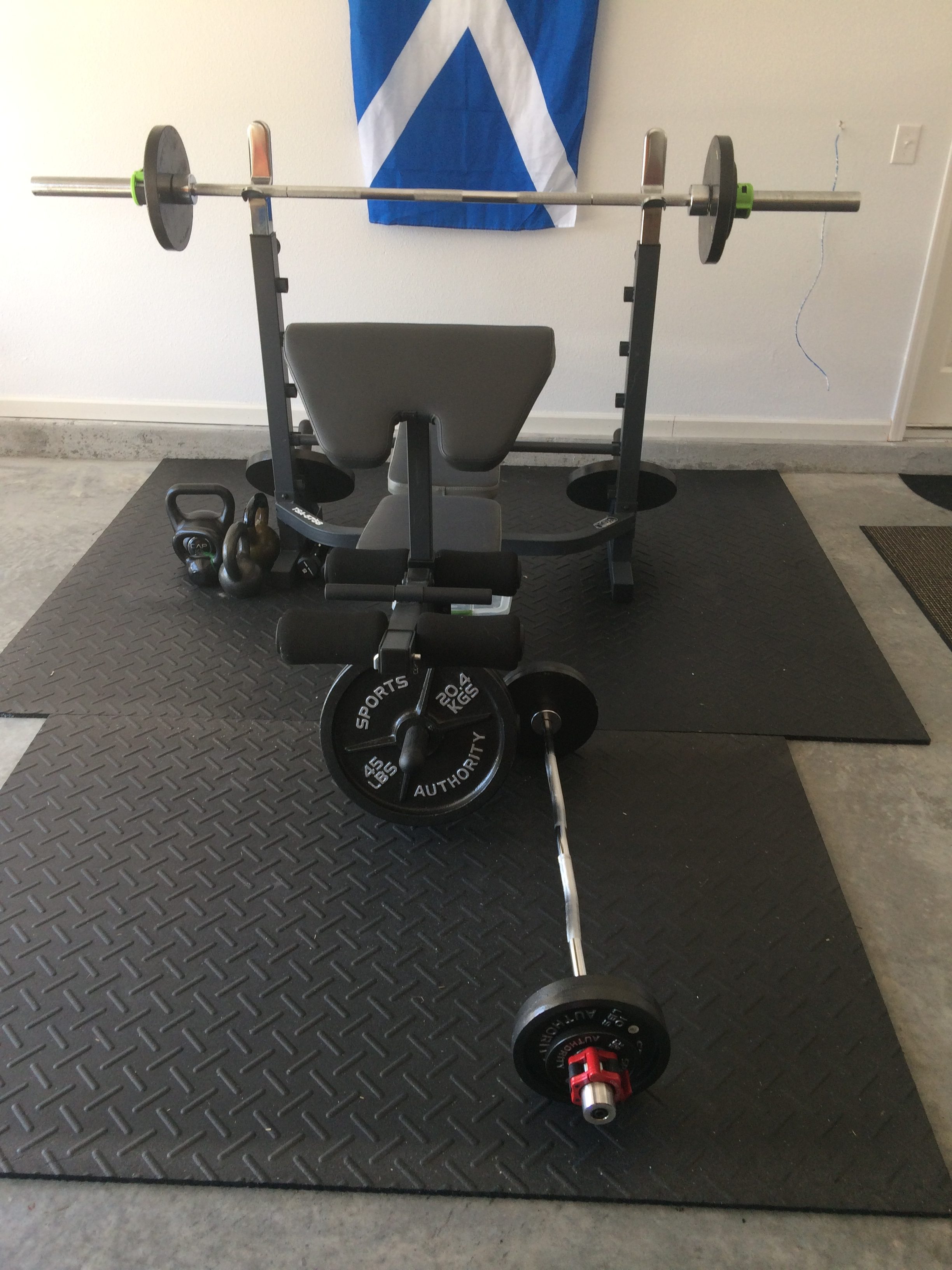 Finally, you need to consider your flooring. How will your floor hold up if you drop a large plate or a heavy kettle bell? How much weight does it take to crack or chip the cement floor (or the cement floor under your carpet if indoors)? Most gyms have some form of rubber flooring to protect their floors from damage caused by dropped equipment. The most common example is interlocking foam tiles available from many sources. These may be sufficient for many applications, but given the prices, a more durable option are equine stall mats (pictured at right) available from places like Tractor Supply. Stall mats are thicker and heavier, and a bit ungainly to work with, but they provide a superior level of protection and are less likely to move or shift under heavy use.
Finally, you need to consider your flooring. How will your floor hold up if you drop a large plate or a heavy kettle bell? How much weight does it take to crack or chip the cement floor (or the cement floor under your carpet if indoors)? Most gyms have some form of rubber flooring to protect their floors from damage caused by dropped equipment. The most common example is interlocking foam tiles available from many sources. These may be sufficient for many applications, but given the prices, a more durable option are equine stall mats (pictured at right) available from places like Tractor Supply. Stall mats are thicker and heavier, and a bit ungainly to work with, but they provide a superior level of protection and are less likely to move or shift under heavy use.
Equipping Your Gym
Now that your environment is set up, it’s time to stock it with equipment! This is a step that will be done over time, and will probably begin with items that you have already been accumulating for some time. So, what equipment do you really need? The simplest answer is that it depends on what you have envisioned for your gym. But here’s a rundown on some of the most basic equipment you should consider, so long as it falls within your master plan.
Free Weights v. Weight Machines
Any kind of resistance training is good. Many people will recommend a home gym machine for its versatility, but they often have drawbacks. Machines, even though they may offer “50 different exercises” do not really offer as many options as you may think without purchasing attachments. Plus, they are expensive, bulky, take up a ton of floor space, and are difficult at best to move if you need to reconfigure your space (I once purchased one for a company fitness center). Free weights on the other hand are easier to work with, offer plenty of versatility, can be moved easily, and can pack away into a much more compact space.
Weight Sets
Although you have the option to just buy what you need and add as your ability grows, you should consider the potential savings of starting out with a standard 300# barbell set from the start. Most sets give you the versatility to use the same plates for barbell, curling bar, dumbbell bars and more so the sets are versatile. I would recommend Olympic size bars as well (with the 2” diameter ends) over standard bars, as the standard bars can only handle 200# of weight.
Dumbbells and Kettlebells
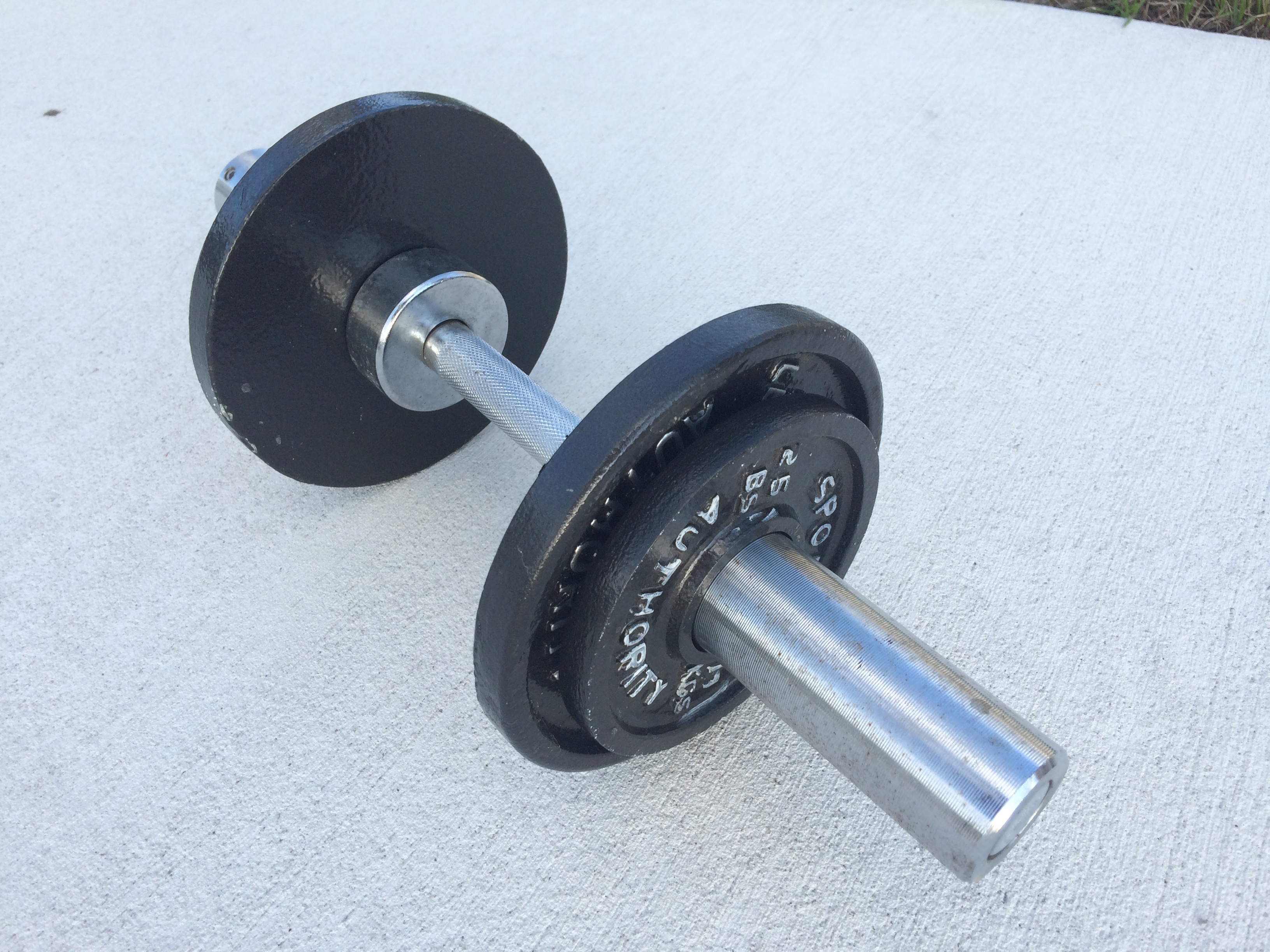 Dumbbells are useful for a lot of upper body workouts and can even be used along with many forms of cardio. However, dumbbells can also take over your gym if you’re not careful. Dumbbell handles which can accommodate the same weight plates as your barbell are a great option to make your existing equipment more useful and prevent too many dumbbells from taking over your gym space. Kettlebells are like dumbbells in their versatility and uses, but offer alternate grips and a few more options for their use.
Dumbbells are useful for a lot of upper body workouts and can even be used along with many forms of cardio. However, dumbbells can also take over your gym if you’re not careful. Dumbbell handles which can accommodate the same weight plates as your barbell are a great option to make your existing equipment more useful and prevent too many dumbbells from taking over your gym space. Kettlebells are like dumbbells in their versatility and uses, but offer alternate grips and a few more options for their use.
Benches and Racks
If you’re going to use free weights, a standard weight bench is a must have. It will allow you a full range of presses and lifts, and will be more useful if it is adjustable to allow inline and decline presses as well. Certain attachments will also allow the addition of leg exercises to be done at the bench. Whether in addition to a weight bench or as a more versatile alternative, a power rack will allow the lifter to incorporate squats and when configured properly pull ups.
Cardio Equipment
Many wouldn’t think of a home gym without at least one treadmill, elliptical, or more pieces of cardio equipment. I would discourage them for at least two reasons. First, most of them will take up a lot of your floor space. Second, and more important, I believe that cardio is something which is best done in the Great Outdoors.
Punching Bags
Good for cardio and maybe even a bit of self-defense training, various forms of punching bags can be a great addition to your gym. However, they don’t come alone in the fact that most bags will need some form of stand to hang from, which is something else that will be taking up your valuable floor space.
The Kilted Gym v1.0
So, now that I’ve discussed the theoretical home gym, what did I choose to do for the Kilted Gym?
As mentioned in a previous post, we selected the garage due to the space available to us there and the nature of some of our equipment. We have chosen to make it mostly a lifting gym, since much of everything else we plan to do, such as cardio, can be done outdoors. And we already had a fair share of equipment including an Olympic weight set, bench, some dumbbells and kettlebells, a heavy bag, and an elliptical (which we couldn’t sell at the garage sale).
Once we cleared out the area we intended to use, we painted the walls. I would have been fine leaving them unpainted, but since the garage walls were drywalled and textured, the Kilted Wife insisted on paint.
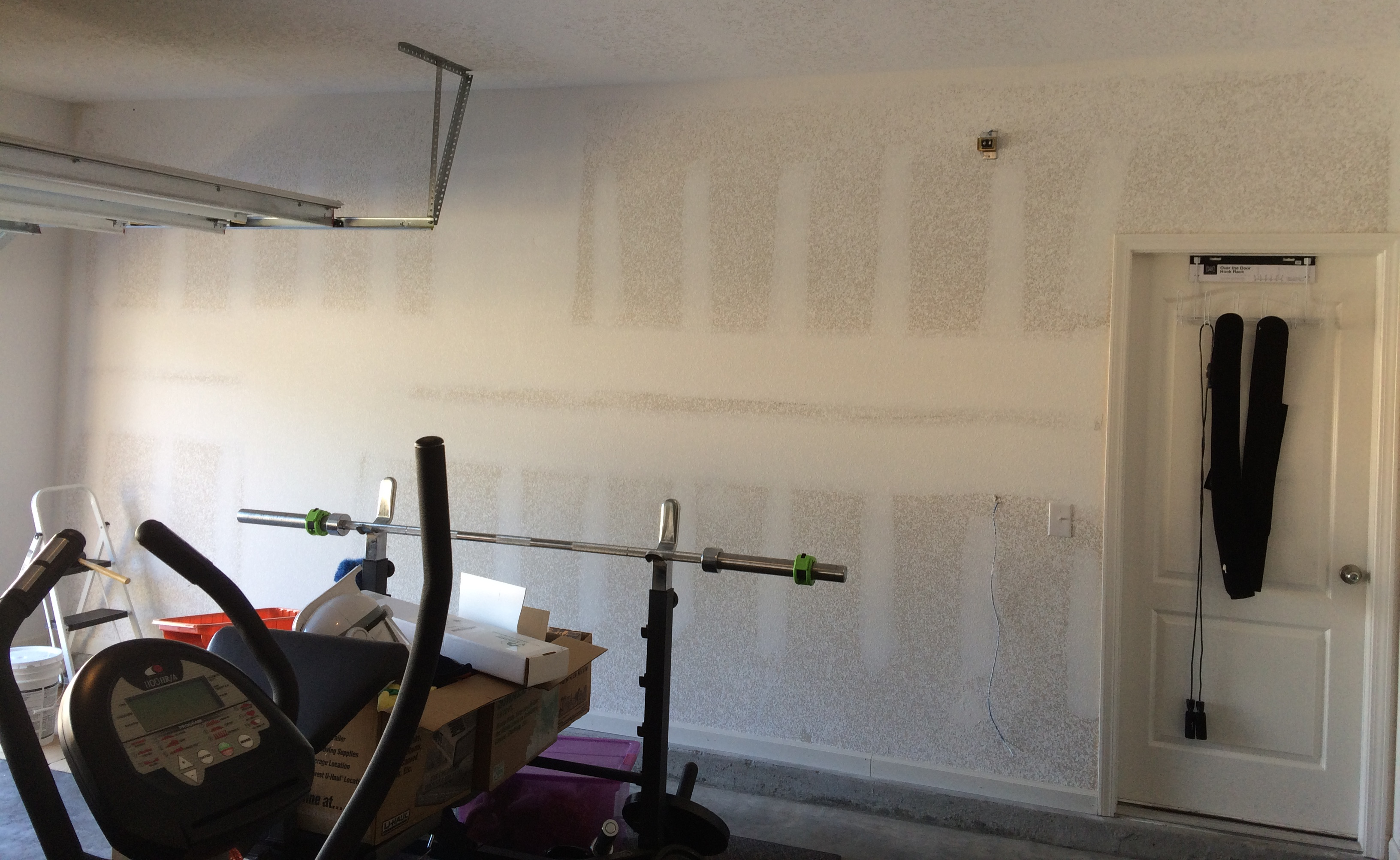
We didn’t attempt anything fancy (at least after she rejected painting a giant saltire on the wall) and chose to simply prime the walls a nice plain white. In the long run, we figured this would offer the best backdrop behind the weight bench for the workout videos we plan to start shooting.
Once the walls were done and the first wave of storage racks were taken care of, we installed 3 equine stall mats to protect the floors, knowing that we may want to put in an additional two in time. One note about the stall mats – since they are made from recycled tires, they come with a very distinct and pungent odor. I solved this problem by scrubbing them down with a solution of Simply Green cleaner and letting them sit out in the sun for a day or two.
Once we situated the weight bench on the stall mats, we were essentially good to go for most of our lifting exercises.
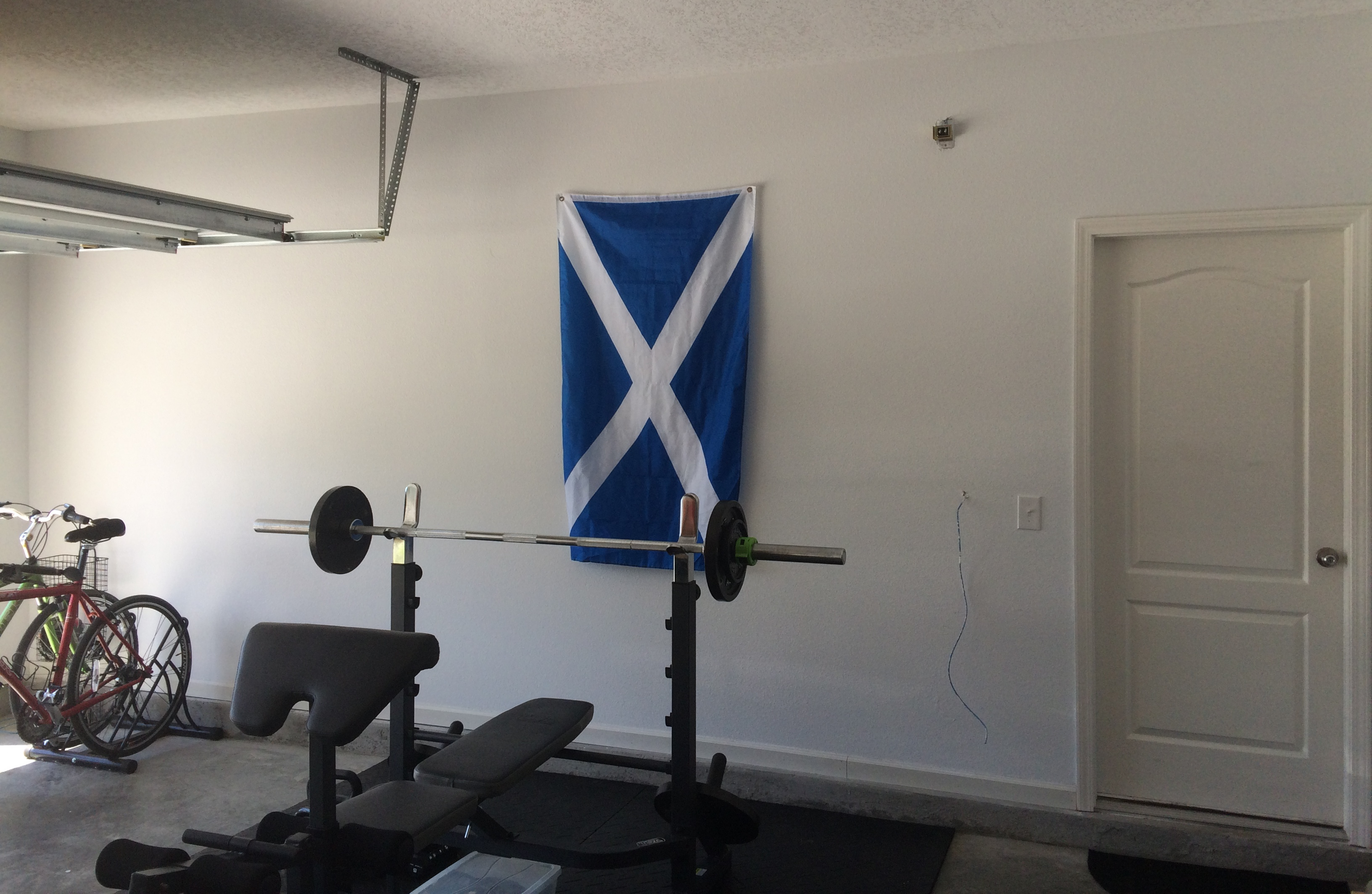
So far, the new setup works well. We will need to do something to better organize our smaller weight plates and give the kettlebells a new home. We have not yet placed the heavy bag (at our last house it hung from a storage rack which is not practical at this house so we will need a stand for it) or the elliptical which we may not even keep (no luck at the garage sale and Play It Again only offered $20 if we put four C batteries in it first to prove it worked).
So, that’s the Kilted Gym. Like all great things, its starting small. But it will grow with more additions in time. We will also be adding some outdoor equipment in the very near future so be on the lookout for more.
